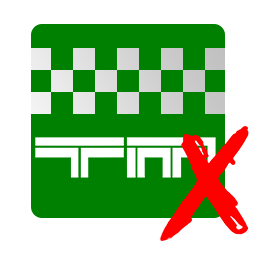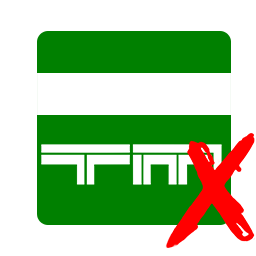wow
its been ages since i put anything in here, but just found this...maybe we can share something on it
Red Bull May Have Invented A Secret New Hybrid Technology
At the Singapore Grand Prix two weekends ago, Red Bull driver Sebastian Vettel won by an unbelievable 32 second margin over his closest rival. Seriously, it's unbelievable. Now F1 experts believe that Red Bull Racing's F1 engineers may have invented a new kind of traction control that links the car's hybrid engine to its suspension — but no one knows for sure. The whole world is stumped.
Let me start out by saying that the technology being discussed here is based on rumor. It's a very well-supported rumor, but there is no proof that what is being discussed here actually exists. That's because we are talking about a field of technology so secret that no one outside the Red Bull Racing F1 team knows what's going on.
The rumor begins in earnest at the Singapore Grand Prix the weekend before last. The race is held on a street circuit with many slow turns on very bumpy pavement. For an F1 driver, these are some of the most difficult turns in the sport, as you need to powerfully accelerate out of the corner, but the bumps unsettle the car and make the wheels spin. It's a test of the driver to manage exactly how much power the rear wheels can handle.
If an F1 car did have traction control (it used to be, but the technology was outlawed), the car's sensors could determine exactly how much grip the rear wheels have on the bumpy asphalt, and maximize the amount of power being put down. In short, with traction control, the driver could get on the gas earlier in the turn, with less need for correction, with less risk of spinning out. More power out of the turn means more speed.
If you watch Sebastian Vettel power out of the slower turns at Singapore, you notice that he gets on the gas earlier than any other driver, with fewer corrections, and gets massively more speed than anyone else on the track. After a safety car bunched the field up with 15 laps to go, Vettel pulled out a 32 second gap over second-place Fernando Alonso. That is unheard of in F1, where a tenth of a second advantage is significant, and a single second gap can make or break a race.
Here's where things get interesting — former F1 team owner Giancarlo Minardi published on his website that he sat near the tight first turn complex, and he noticed that Vettel's Renault-supplied engine had a different sound than any other engine on the track, including that of his teammate's.
Quote from "Minardi"
The thing that surprised me the most was the RB1 engine’s output sound. Besides speeding up 50 m before any other driver, the Renault engine of the German’s car grinded like no other French engines on track, neither like Mark’s. That sound was similar to the sound made by the engine when the traction control system got into action in the past seasons.
now lets click this link and find out what every ones talking about
http://youtu.be/8DwXOPN7ZIM
and listen to the sound of an F1 car from 2007, when traction control was still legal !!
http://youtu.be/nZLHxu02hhw
Can you hear how the two engines both sound like they're grinding as the car comes out of the corner?
Of course, traction control is currently banned in F1. How is it made illegal? Well, every single car on the grid uses the exact same ECU, so no TC can work through the central computer system. Traction control could possibly come from some kind of exotic means of engine management programming, which could limit the amount of power coming from the engine out of corners. Formula One's management, however, checks every car's engine mapping code and it's not allowed to change race by race. There's no way that Red Bull could hide its traction control there.
There is a possibility, though, that Red Bull has managed to find a legal way of making some kind of traction. One theory, put forward by Racecar Engineering, supposes that Red Bull may have linked the hybrid KERS system to the suspension, getting around the problem of uniform ECUs and also of unchangeable engine maps.
*Racecar Engineering starts with a simple proposition.
It is theoretically easy to modulate the output torque and charging input torque to an electric motor/generator using
capacitors, batteries, inductors and a feedback signal. Torque changes are instant and control is easy and legal.
*And goes on to explain how the system would work.
If torque were to be modulated in response to the normal force of the tires against the track (in response to shock pressure for example) significant unused traction potential could be recovered during high pressure phases (upside of bumps) and initiation of full wheel spin during low pressure phases (downside of bumps) could be delayed
*The excellent F1 blog Axis of Oversteer points out that this theory is supported not just in Vettel's performance at Singapore, but also with Red Bull's history with their hybrid system...
*You might imagine a system like this would require extra sensors and controllers. While the KERS system is separate from the auxiliary electrical system, it is also known that the RB9 places especially high demands on its alternators which led to failures in the past (as constructed, materials were not up to demands)....
*It should be said, though, the Sebastian Vettel stated to the press before this most recent Korean Grand Prix that he had some kind of secret system in his car....
*We were playing around quite a lot with it in practice, but the first time it worked was in the race... I was quite confident other people would never figure out how we did it... We are pretty proud of the system we have because other people will never figure out how we’ve done it...
*When asked about his upcoming 2014 F1 car, Vettel gave this further encouragement.
There's elements of this year's car going in to next year's...things like traction control will obviously be..
*He then trailed off into a grin, reports the Times of India.
Watch Vettel monster out a lead in Singapore like never before in this season, or any season of recent memory, though, and it becomes clear that it's easier to believe that the best design team in Formula One has developed a secret form of suspension-linked hybrid-drive traction control that skirts F1's unbelievably tight regulations, than it is to believe that Vettel's unbelievable lead was down to driving style.
If the Racecar Engineering theory is correct, this way of bending the rules will go down as one of the most legendary designs in motorsports.
*Double world champ Fernando Alonso pointed out that there is definitely something going on with this year's Red Bull, and it may go back to testing much earlier this year.
"If you go to the winter tests in Barcelona, in the corners the Red Bull had a different sound. So they are using something different compared to the other teams but it's something that is completely okay."
OMG
is RedBull cheating in some kind of way ???? "maybe thats why mark is leaving as well" maybe not,
This leads to a seemingly obvious question... why not put it in Webber's car? The only rational answer is that Seb wouldn't allow it..
It's not possible that Vettel is 32 seconds worth of a better driver than the rest of the field over that short period of time post-safety car, so whatever the actual explanation is... traction control is far more likely
^^^this above is ALL copy pasted from a story i have found on a motor page.....



 Log in
Log in
 Trackmania² Exchange
Trackmania² Exchange
 Shootmania Exchange
Shootmania Exchange
 TrackmaniaExchange
TrackmaniaExchange
 Trackmania Original Exchange
Trackmania Original Exchange
 Trackmania Sunrise Exchange
Trackmania Sunrise Exchange
 Trackmania Nations Exchange
Trackmania Nations Exchange
 Trackmania United Forever Exchange
Trackmania United Forever Exchange
 Trackmania Nations Forever Exchange
Trackmania Nations Forever Exchange
 ItemExchange
ItemExchange
 ManiaPark
ManiaPark
 TMTube
TMTube
 ManiaExchange Account
ManiaExchange Account
 ManiaExchange API
ManiaExchange API





 Can't drive anymore this year as the back hurts too much.
Can't drive anymore this year as the back hurts too much.


